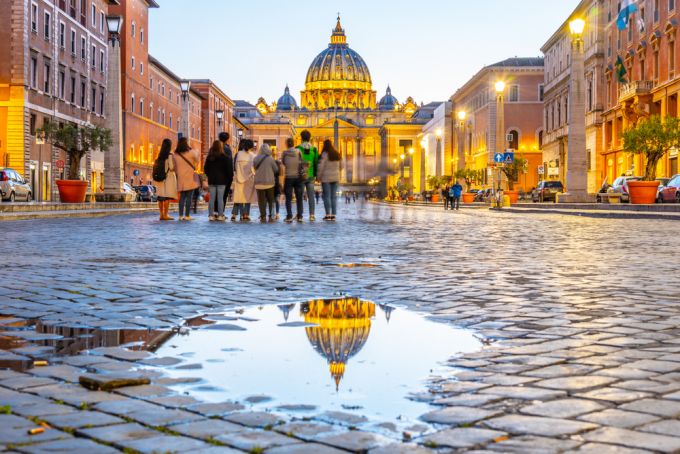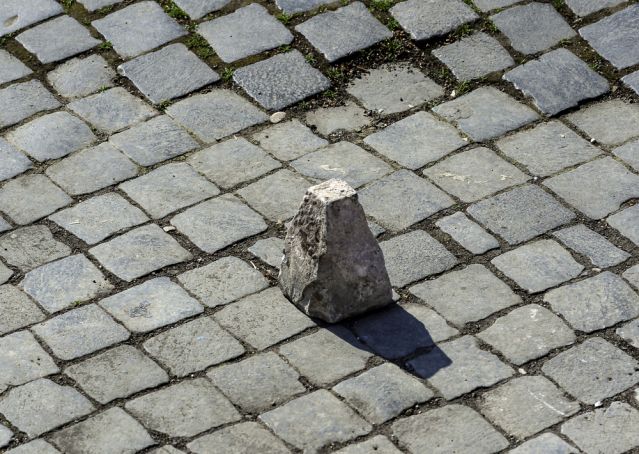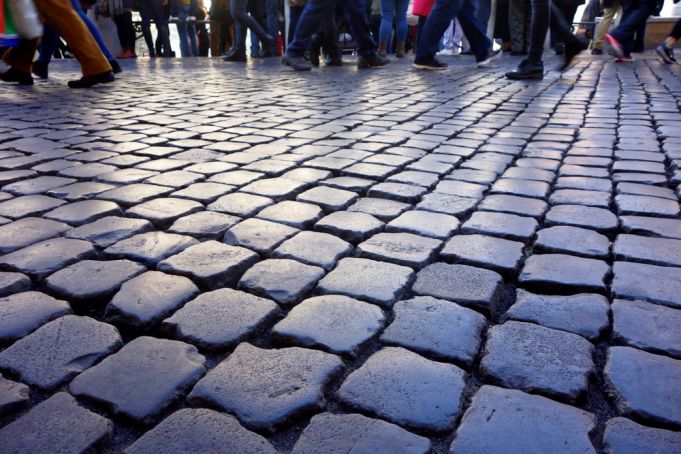Rome's traditional cobblestones are loved and hated in equal measure.
Rome would not be the same without its ubiquitous cobblestones, known locally as sampietrini, which carpet the streets and alleyways of the city's historic centre.
Although an undoubted symbol of Rome, and much-photographed by tourists, the sampietrini (known by some as sanpietrini) are a source of debate and division among Romans.
The purists defend the traditional role of the basalt stones in the landscape of the Eternal City, however motorists - particularly those on two wheels - beg to differ.

They say the sampietrini are unsuitable for modern transport, providing a bumpy journey and - when it rains - a treacherous surface for motorbikes and scooters.
Neither are they ideal for pushing strollers over, or walking across in high heels.
They add to the noise of traffic whose vibration causes damage to surrounding buildings, while a missing sampietrino poses obvious dangers to motorists.
However, in addition to their aesthetic quality, the humble sampietrini have certain advantages: they are robust but quick to remove when required, they offer easy drainage and can be reused.
As for the sampietrino itself, it is a pyramid-shaped block of volcanic rock, cut by hand and then hammered into a sand base with mallets until it forms an even - or relatively even - surface.

The rock originally came from quarries around Rome, at the foot of the Alban hills but also around Viterbo, however in 2000 the city imported machine-made stones from China in a bid to spruce up the capital for the Jubilee year.
In recent years Rome has removed the historic cobblestones from streets used heavily by traffic, which in turn have been asphalted, leaving a thin border of sampietrini to serve as a reminder of what once was.
The stones removed from busy streets are being taken to quieter, narrow streets which are either pedestrianised or have little or no traffic.
The most high-profile street destined to be paved with sampietrini is Via del Corso, the city's main thoroughfare, between Piazza del Popolo and Piazza Venezia.
Link between Rome and sampietrini
The story dates back to the end of the 16th century when they were first used in the area around St Peter's under the pontificate of Sixtus V (1585-1590).
As for its name, the term sampietrino / sanpietrino was born in 1725 to describe the new paving stones in Piazza San Pietro.
Their use became more widespread in the early 18th century under Pope Clement XII Corsini who oversaw extensive building programmes in Rome.

The sampietrino comes in various sizes according to the sampietrino.it website: the largest measure 12×12×18 cm; the most common ones are 12×12×6 cm; while the smallest ones, 6×6 cm, are very rare but can be found in certain areas of Rome such as Piazza Navona.
In recent years the city's traditional sampietrini have been joined by hundreds of brass cobblestones, each with its own devastating story to tell.
These memorials are referred to as stolpersteine in German, or literally translated “stumbling stones” and are installed outside the last chosen place of residence of victims of the Holocaust.
During Italy's covid lockdown in the spring of 2020, grass grew between the city's sampietrini, most noticeably in Piazza Navona and Piazza del Popolo, which were covered in a green carpet.
















